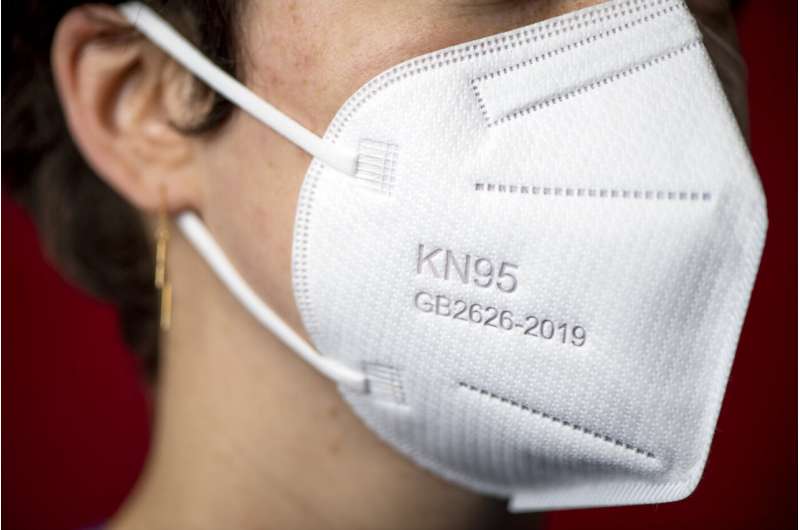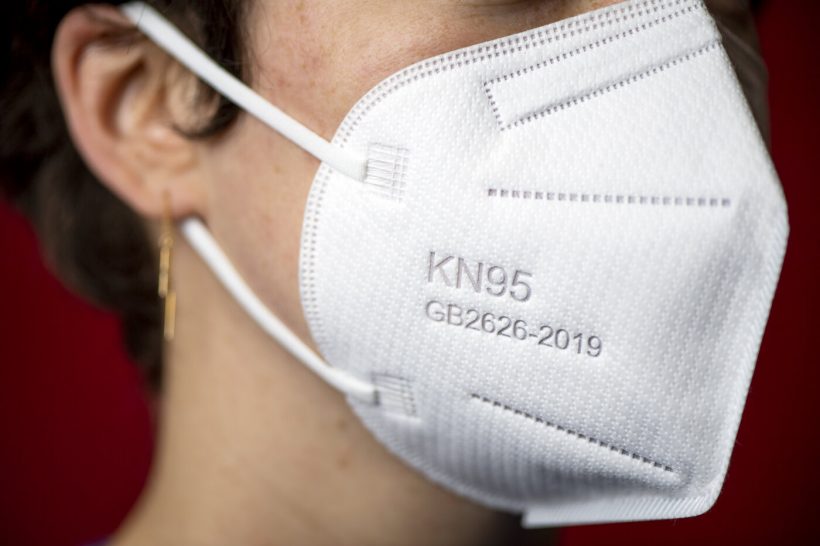
In the face of the highly infectious omicron variant, the U.S. Centers for Disease Control and Prevention updated its mask guidance for the general public this month. The new recommendations emphasize that properly fitted N95 respirators and the similar KN95s are most effective at protecting yourself and others from SARS-CoV-2, the coronavirus that causes COVID-19.
Now, demand for these masks has soared, and fake versions are popping up for sale—particularly online.
Counterfeit N95 masks are not a new problem. Over the course of the pandemic, U.S. Customs and Border Protection officers have seized millions of counterfeit masks.
The problem with counterfeit masks is that they have not been certified for meeting certain standards for how well they protect a wearer and those around them, explains Taskin Padir, an associate professor of electrical and computer engineering at Northeastern. So wearers have no way of knowing how protected they actually are.
Certified masks have undergone a specific set of tests by specialized laboratories to ensure that they will be safe. (Early in the pandemic, Padir mobilized his research team to develop a robotic technology to integrate these safety tests more expeditiously into the manufacturing process.)
“There are standards that these materials need to pass. And it’s not only the particle filtration,” Padir says. It’s also about how the material performs under various pressure conditions, how readily fluids can pass through it, and figuring out under what conditions the material might burn.
The tricky thing, he adds, is that you can’t always tell the materials that will pass these tests from those that will fail just by looking at them.
But for consumers, “this is a problem with a solution,” says Nikos Passas, professor of criminology and criminal justice at Northeastern, who studies the counterfeit medical trade. When you’re buying masks, there are ways to tell a real N95 or KN95 from a fake one.
A key difference between real N95s and real KN95s
The way to know a N95 mask is the real deal is that all N95 masks are approved by the U.S. National Institute for Occupational Safety & Health (NIOSH). That’s because the N95s are made in the United States and thus are reviewed by U.S. processes. So if an N95 mask is given the stamp of approval from NIOSH, it offers that certified level of protection.
However, KN-95s (and the similar KF-94 masks) are mostly made—and vetted—in China or South Korea. So, Passas says, if they are stamped as “NIOSH-approved,” they are actually fakes.
“When it comes to spotting fakes, whenever you have this inconsistent NIOSH approval, that’s one giveaway,” Passas says. “Another one is if there are typos on the packaging and so on.”
How to spot a real KN95
In China, KN95 masks also are certified under certain standards of performance. Masks certified through this process are all stamped with one of two codes, Passas says. Real KN95s will be stamped with either “GB 2626-2006” or “GB 2626-2019,” indicating that they were approved through either the older (2006) or newer (2019) standards in China.
Another thing to look for: The packaging must indicate the manufacturing date. Proper KN95s will be given a two- to three-year expiration date, says Passas. “When you don’t find those kinds of things, then you know that they are problem products.”
Where to find the real masks
The easiest way to know you’re getting a real mask, Passas says, is to buy them from a reliable source.
One place to start: The Biden administration recently announced that it will be sending 400 million N95 masks to pharmacies and community health centers to give out for free. Those masks, of course, will be NIOSH certified.
Source: Read Full Article
